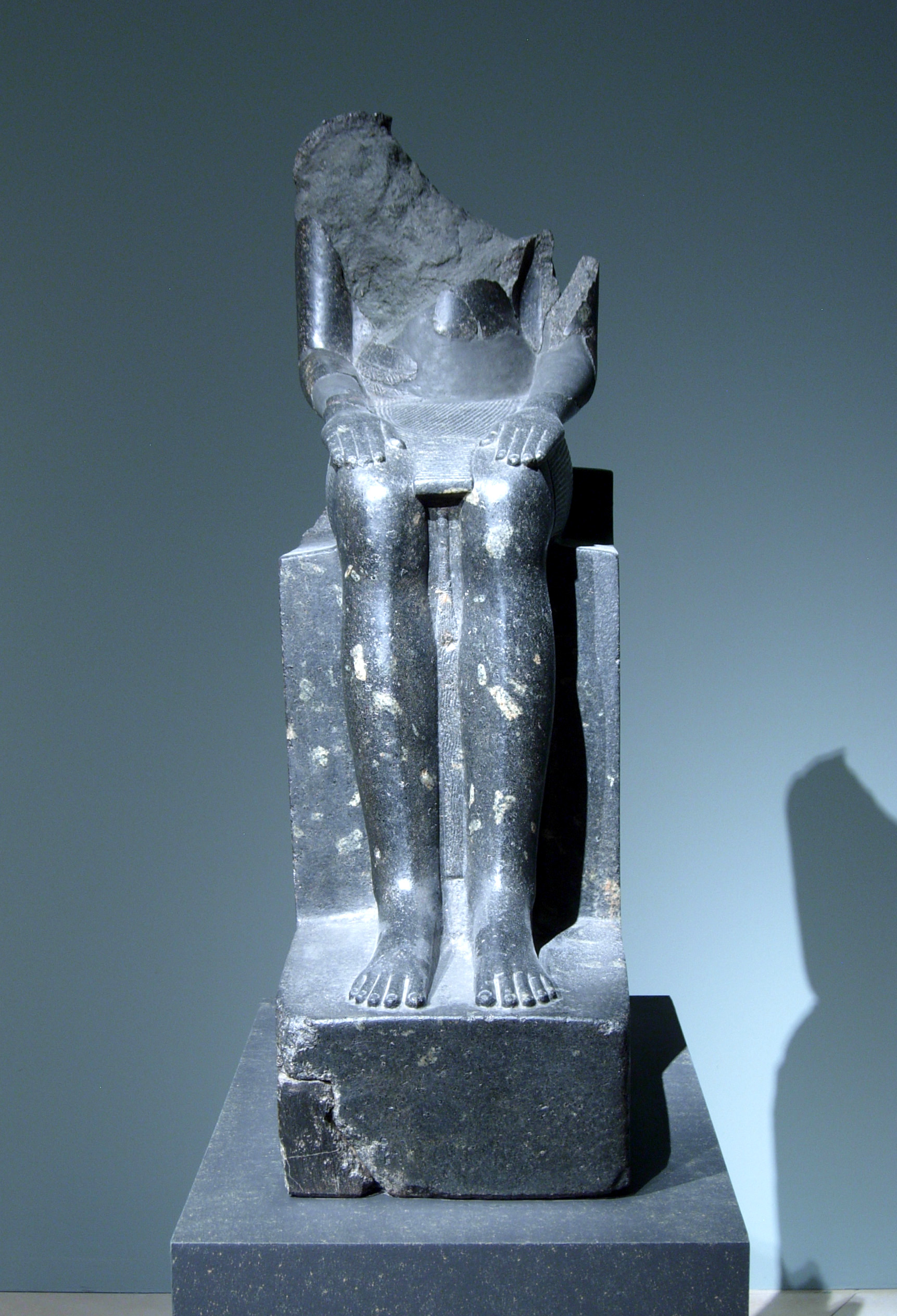Lower Part of a Statue
New Kingdom
There is no inscription to identify the king depicted in this seated statue. However, the fact that it was found in fragments with the smashed statues of Hatshepsut suggests that this, too, represented the female pharaoh. For more than 1500 years before Hatshepsut ascended the throne, the ideal Egyptian king had been represented as a young man in the prime of life. This ideal applied whether the ruler was an old man, a young child, or a woman.
Two of Hatshepsut's statues depict her as a female ruler (29.3.2), but most of them depict her as the ideal king (30.3.1). However, this should not be taken as a sign that she was trying to fool anyone into believing she was a man. The inscriptions on the masculine statues generally included either a feminine grammatical form or her personal name, Hatshepsut, which literally means "Foremost of Noblewomen." She had also been in the public eye since childhood, first as "king's daughter" of Thutmose I, then as "king's principal wife" of her half-brother Thutmose II, then as regent to her nephew/step-son Thutmose III, and finally as senior co-ruler with the same king.
Due to rights restrictions, this image cannot be enlarged, viewed at full screen, or downloaded.
This artwork is meant to be viewed from right to left. Scroll left to view more.



